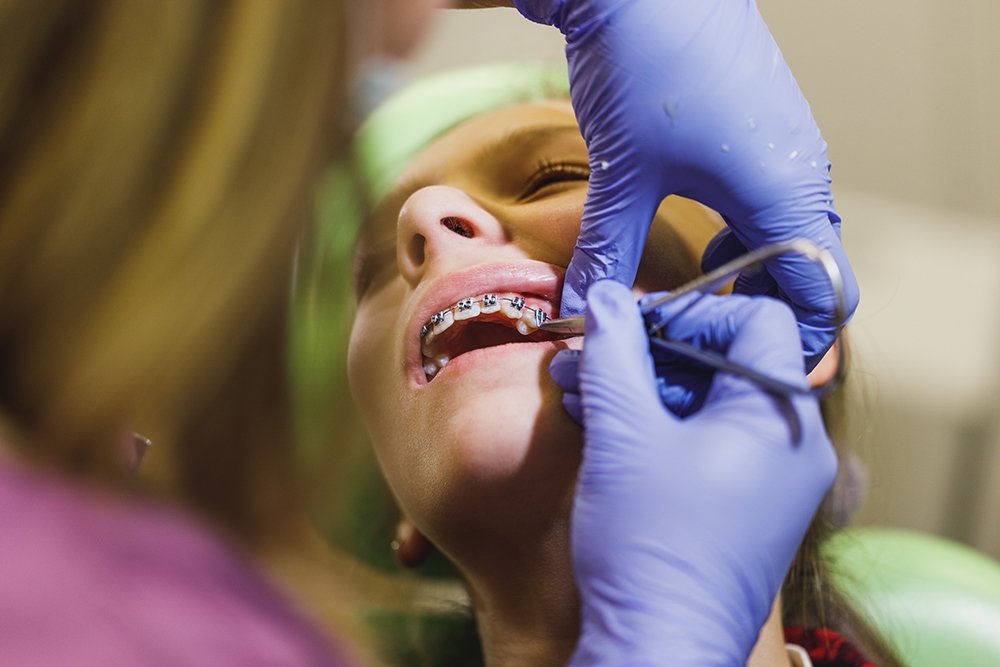Consultation for dental care
Ready for Early Orthodontic Treatment for a Brighter Smile Tomorrow?
Contact us now to book your Orthodontic Treatment!
Having a straight and healthy smile is a goal for many people. Braces are one of the most effective orthodontic treatments used to correct misaligned teeth and jaw issues. With advancements in dental technology, traditional metal braces are no longer the only option—patients can now choose from different types and even aligners treatment for a more discreet and comfortable experience.
If you’re considering this treatment option, this guide will help you understand their benefits, types, and how they can transform your smile.
Braces are orthodontic devices designed to correct misaligned teeth, bite issues, and jaw irregularities. They work by applying constant pressure on the teeth, gradually moving them into the correct position over time. Treatment duration can vary depending on the severity of misalignment and the type of braces used.
– Improved Oral Health: Properly aligned teeth are easier to clean, reducing the risk of cavities and gum disease.
– Enhanced Aesthetic Appeal: It improve the appearance of your smile, boosting confidence.
– Better Bite and Function: Correcting misalignment helps with chewing, speaking, and preventing jaw pain.
– Prevention of Future Dental Problems: It help prevent uneven wear of teeth and jaw issues.

There are several types available, each with unique advantages. The right choice depends on your specific orthodontic needs, budget, and aesthetic preferences.
Metal braces are the most common and effective type of orthodontic treatment. They consist of metal brackets attached to each tooth and connected by wires. These wires are periodically tightened to shift the teeth into place.
Pros | Cons |
Highly effective for complex cases. | Visible on teeth. |
Durable and cost-effective. | May cause discomfort initially. |
Can be customized with colored band |
Ceramic braces function similarly to metal one but have brackets made of tooth-colored or clear material, making them less noticeable.
Pros | Cons |
Less visible than metal ones. | More expensive than metal ones. |
Effective for various orthodontic issues. | Brackets can stain if not properly maintained. |
Lingual braces are similar to metal ones but are placed on the back of the teeth, making them virtually invisible.
Pros | Cons |
Hidden from view, offering a discreet treatment option. | More difficult to clean. |
Can be uncomfortable for the tongue. | |
More expensive than traditional ones. |
For those who prefer a nearly invisible and removable orthodontic solution, aligners treatment is an excellent alternative to traditional one.
Clear aligners, such as Invisalign, are transparent plastic trays custom-made to gradually shift teeth into their correct positions. Unlike traditional ones, they do not have brackets or wires.
Pros | Cons |
Virtually invisible. | Not suitable for severe misalignment. |
Removable for eating and oral hygiene. | Requires discipline to wear 20–22 hours a day. |
More comfortable than traditional ones. | Can be more expensive than traditional ones. |
Choosing between braces and aligners treatment depends on multiple factors:
To achieve the best results, proper care is essential:
For traditional ones:
For Aligners:
Whether you choose traditional ones or aligners treatment, orthodontic care can significantly improve your dental health and confidence. Each option has unique benefits, and the right choice depends on your needs, lifestyle, and budget. Consult with an orthodontist to find the best solution for your smile transformation.
If you’re considering getting braces or aligners treatment, now is the perfect time to take the first step towards a straighter, healthier smile
Contact us now to book your Orthodontic Treatment!
The Urban Dentist offers a top-quality dental experience. With advanced equipment and technology, we ensure that you receive the best possible care.
Mon – Sat:
Sunday:
Emergency Hours

©Copyright 2024 TheUrbanDentist. All rights reserved.
Manage By The Urban Dentist